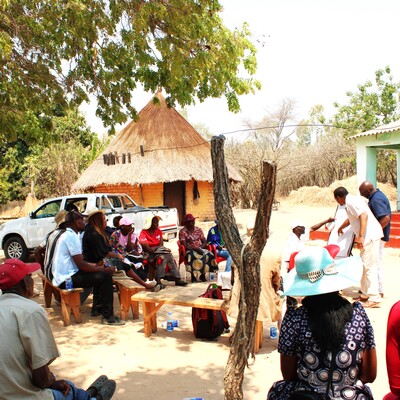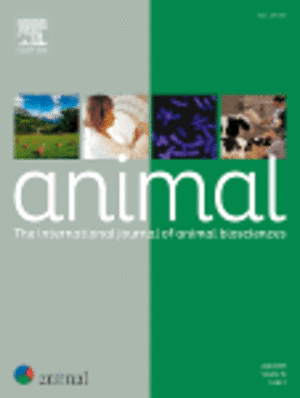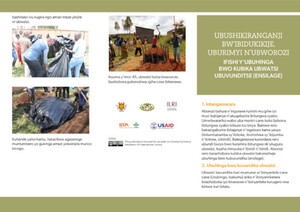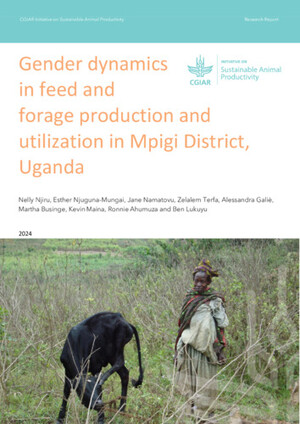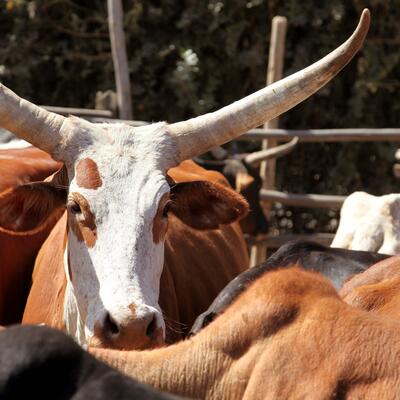
Help shape a feed and forage strategy for ILRI – Your inputs needed
The availability of sufficient and adequate feed is one of the most significant constraints to livestock productivity in the tropics. It is an enormous challenge that requires innovation and concerted action towards agreed priority outcomes.
The International Livestock Research Institute (ILRI) is committed to delivering evidence and developing capacities in feed and forage development as part of its strategy to achieve better lives through livestock.
ILRI has a long record working with partners to research ways of increasing the availability of improved feeds and forages, optimizing on-farm feeding strategies and improving feed value chains. It has significant livestock genomics capabilities, it manages a forages genebank and carries out work on feeds and GHG emissions of African livestock. It leads the CGIAR Research Program on Livestock and is a major partner in the Feed and Forages flagship of this program.
ILRI feed and forage development strategy consultation
To ensure the best response to the fast-changing demands and opportunities in this sector, ILRI is developing a strategy on feed and forage research for development. As a first step, we will take stock of the challenges in this area, identify priority outcomes and promising approaches to achieve them, and specify the precise contributions and added value of ILRI in this area.
We welcome contributions from you – the wider community – to help make this process as relevant as possible.
Please read the short background information below and take this short survey to help us identify the main issues we need to address: https://www.surveymonkey.com/r/ffd-strategy
Background
The availability of sufficient and adequate feed is one of the most significant constraints to livestock productivity in the tropics. As demand for animal products increases, livestock producers seek affordable, reliable, high-quality, year-round feed sources to sustain their animals and livelihoods. They also look for ways to boost the conversion of their feed inputs into greater productivity and returns.
Research shows there is enormous potential to increase livestock yields in tropical livestock systems from improved nutrition, health and breeding; with modelled scenarios indicating that improved nutrition could in many cases double production[1]. The quality of crop residues can be enhanced by leveraging opportunities from technologies from the lignocellulosic biofuels industries[2], and by harnessing the genotypic variation in fodder traits of food crops, without loss of grain yield[3]. Planting improved forages offers multiple advantages[4], especially in areas with limited land availability. New tools in molecular genetics and genomic technologies are becoming available to help take advantage of the genetic diversity in crops and forages available for feed improvement. These advances have already been widely applied to crop improvement and offer the opportunity for new approaches to enhance quality and performance traits of feeds and forages at a relatively low cost.
As well as increasing feed production, there is considerable potential to radically improve feeding through enhanced targeting of simple feeding technologies, commercialization of seed supply systems, better processing of biomass post-harvest and exploitation of demand for new feeding methods in response to local market pull.
A critical challenge in all of this is to meet the increasing demands for livestock feeds with the same or reduced resources in the face of a changing environment and without damage to the natural resource base and biodiversity that are essential to secure future livelihoods.
Take the survey: https://www.surveymonkey.com/r/ffd-strategy
References
[1] Mayberry, D., Ash, A., Prestwidge, D., Godde, C.M., Henderson, B., Duncan, A.J., Blummel, M., Reddy, Y.R. and Herrero, M. 2017. Yield gap analyses to estimate attainable bovine milk yields and evaluate options to increase production in Ethiopia and India. Agricultural Systems 155:43–51. https://doi.org/10.1016/j.agsy.2017.04.007
[2] Blümmel, M, Sudharakan, D. S. Teymouri F., Gupta, S. K., Sharma, G. V. M., Ravindranath, K and Padmakumar, V. 2018. Spin-off technologies from 2nd generation biofuel: potential game changers for upgrading cereal straws and stovers for livestock feed in India. Invited Key Note Paper. Indian Animal Nutrition Conference February 1-3, Gujarat India. http://hdl.handle.net/10568/92863
[3] Blümmel M, Deshpande S, Kholova J and Vadez V. 2015. Introgression of staygreen QTL’s for concomitant improvement of food and fodder traits in Sorghum bicolor. Field Crops Research 180:228-237. https://dx.doi.org/10.1016/j.fcr.2015.06.005
[4] White DS, Peters M and Horne P. 2013. Global impacts from improved tropical forages: a meta-analysis revealing overlooked benefits and costs, evolving values and new priorities. Tropical Grasslands – Forrajes Tropicales 1, 12–24. http://hdl.handle.net/10568/35004








